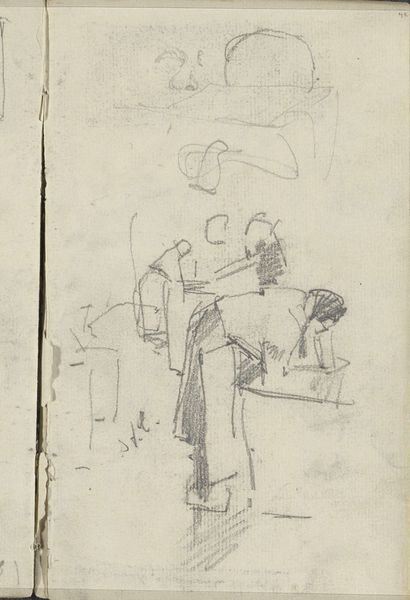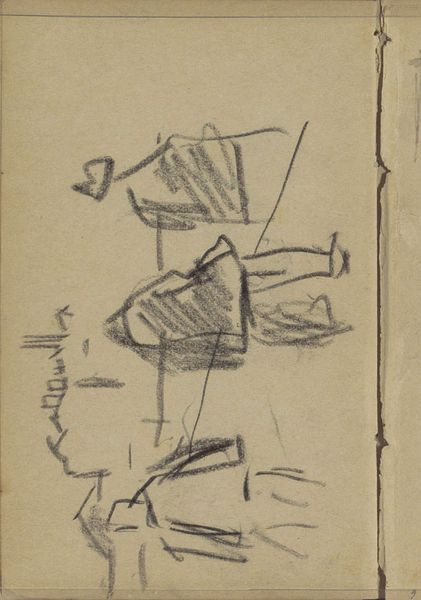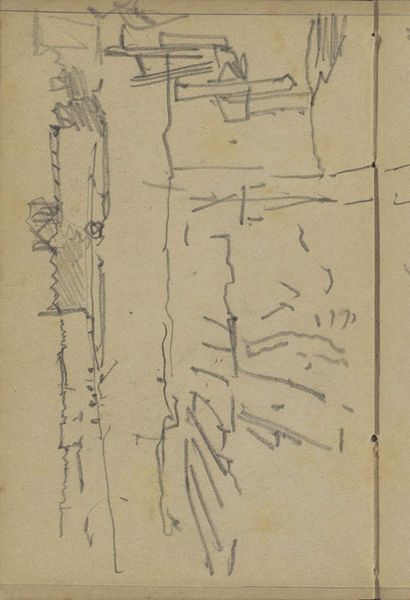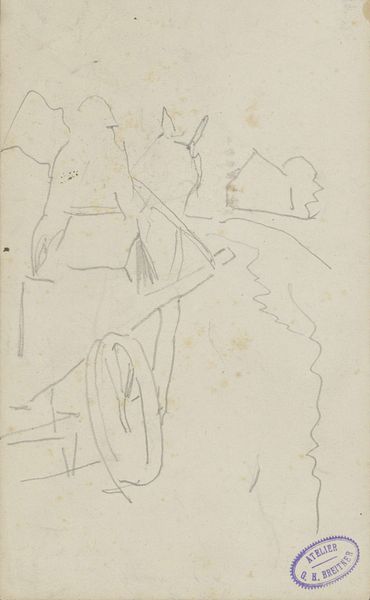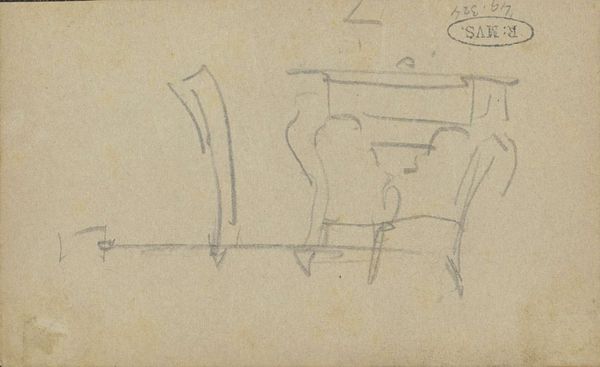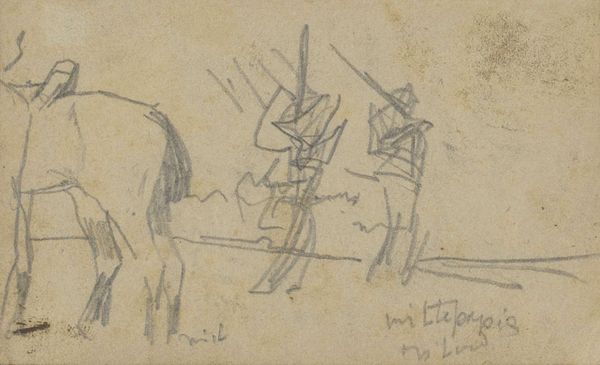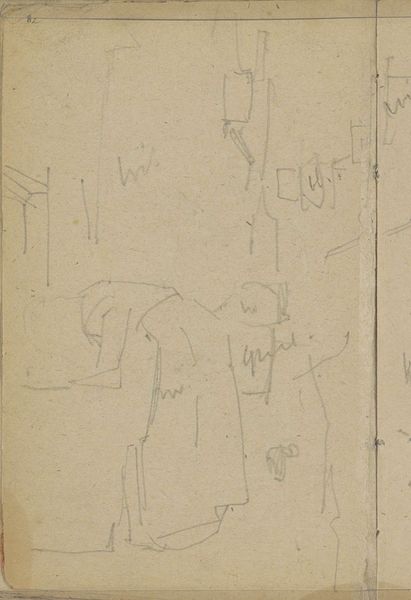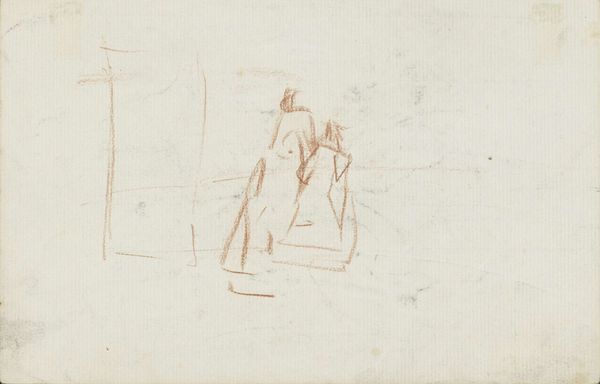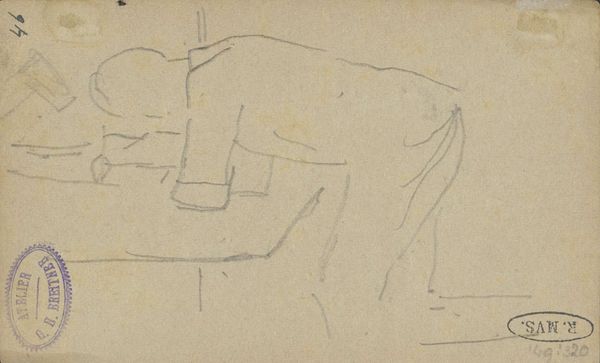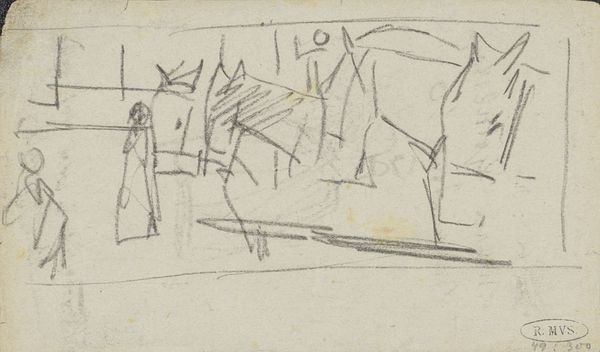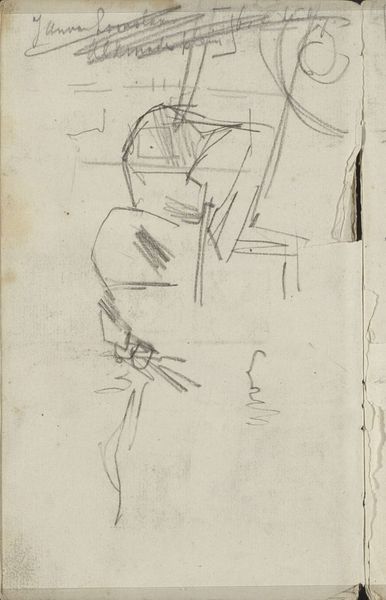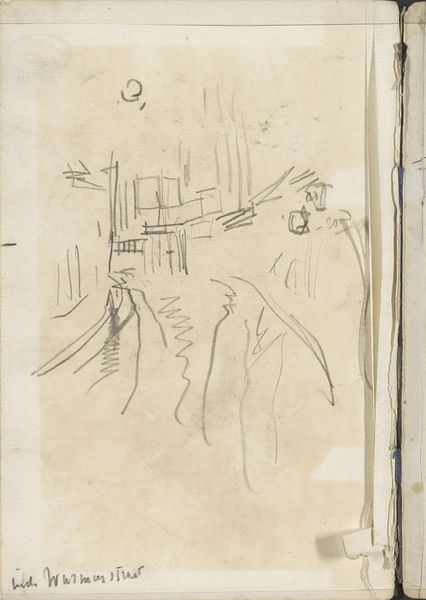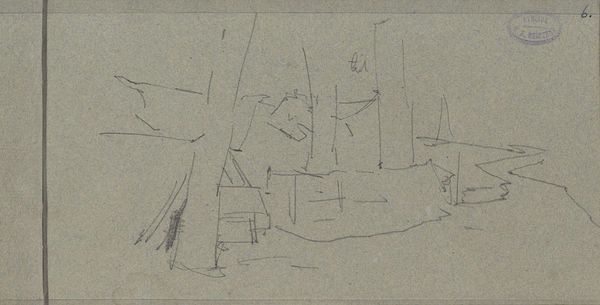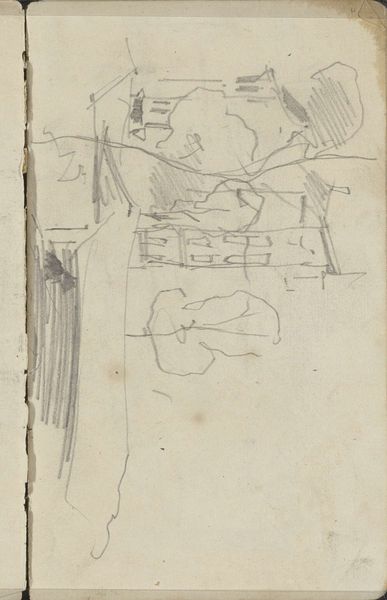
Dimensions: height 78 mm, width 128 mm
Copyright: Rijks Museum: Open Domain
Editor: This is "Staand Paard," or "Standing Horse," a pencil drawing by George Hendrik Breitner, probably made between 1882 and 1912. It’s currently housed in the Rijksmuseum. The sketch is incredibly sparse and, I think, rather haunting. What do you see in this piece? Curator: It's interesting that you find it haunting. For me, Breitner's sketches, even the most minimal like this one, serve almost as a cultural touchstone. Consider how the horse, for centuries, represented power, labour, and even freedom. Here, stripped bare, it's a memory of those potent associations, lingering in our visual lexicon. Do you get any sense of those former connotations? Editor: I suppose so. But it's so deconstructed that the power seems… diminished. It's like a ghost of the horse, rather than the thing itself. The stark lines make it seem vulnerable, almost sad. Curator: Indeed. Perhaps Breitner, consciously or not, captures a shift in perception. As industrialization progressed, the symbolic weight of the horse began to change. The drawing marks an intriguing intersection - the fading of one symbolic order and the uncertain emergence of another. Look at the way the sketch almost blends into the paper. Editor: Yes, it’s very faint, like he was trying to capture something fleeting. Curator: Exactly. Think of the sketch as a moment of cultural remembrance, preserved in graphite. What was once vibrant and integral is now a study in memory and absence. Do you think it matters that he never "finished" this drawing? Editor: It adds to that feeling, doesn't it? As if the memory itself is incomplete, fading over time. Curator: Precisely. We see a cultural narrative shifting before our very eyes, and through a humble sketch, Breitner invites us to contemplate those changing symbols. It has certainly given me much to ponder regarding our relationship to these cultural carriers. Editor: Me too! I initially saw only a simple sketch, but now it speaks volumes about cultural memory.
Comments
No comments
Be the first to comment and join the conversation on the ultimate creative platform.
